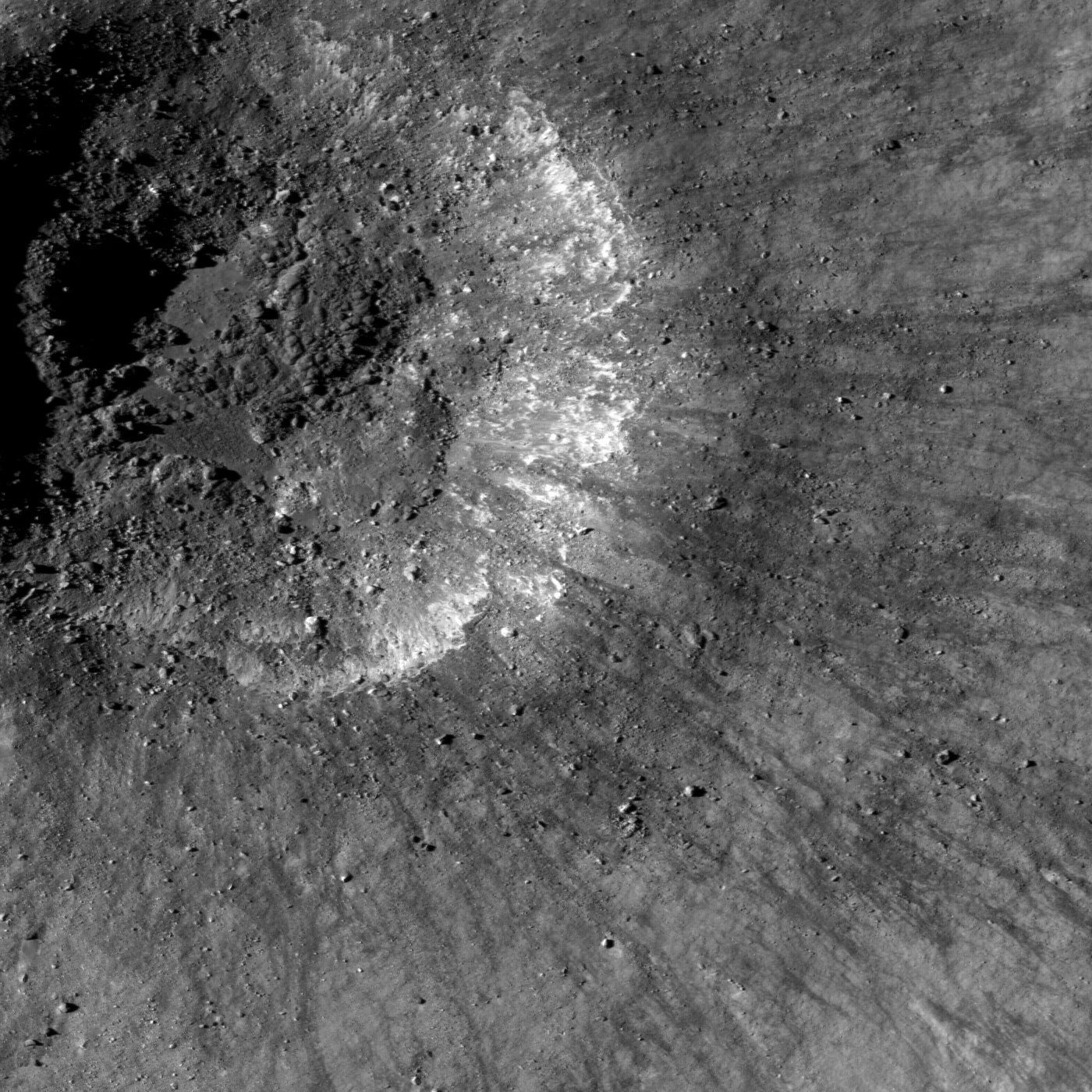
When you look at the Moon, you'll notice right away that the Moon is covered with impact craters. The size of an impact crater is related to the size of the asteroid or comet that struck the Moon. Smaller impacts happen much more frequently than large impacts, so the Moon has many small craters. Smaller impact craters also tend to be younger than larger impact craters because they are easily destroyed during the formation of other craters. This unnamed crater is notable for several distinct features. It is not circular in form like most impact craters, perhaps due to a pre-existing crater on the surface or a weakness in the subsurface. The dark streamers are the result of rock that was melted during the impact that was sprayed out as part of the ejecta. The jumbled floor is made of rock broken during the impact mixed with impact melt and soil and has probably changed little since the crater formed.
Most impact craters on the Earth are poorly preserved due to rain, wind, and other forces not present on the Moon. Meteor crater in Arizona is one of the best-preserved examples, and its diameter (1200 m) is a just a little larger than the lunar example shown here. Meteor crater is also distinctly non-circular, and when viewed from above looks a bit squared off. The strikingly square-like shape is due to perpendicular faults that provided a path of weakness for material to move during the impact.
Browse the whole NAC image!
Published by Mark Robinson on 31 August 2009